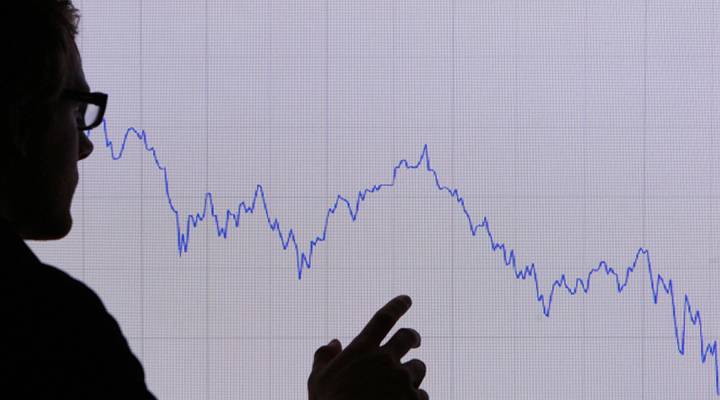
How will we know we’re in a recession?

Many economists are searching for signs of the next recession. Chief among them are the economists at the National Bureau of Economic Research, a group that studies the trends and turning points of the U.S. economy. James Poterba, president of NBER, sat down with “Marketplace” host Kai Ryssdal to talk about what he looks for when it comes to tracking a recession. The following an edited transcript of their conversation.
Kai Ryssdal: First things first: What is the National Bureau of Economic Research? Who are you guys?
James Poterba: Well, the NBER was founded in 1920, when there was much less information and data on the U.S. economy. The two founders, one of them was a Marxist labor organizer and the other was a corporate titan who worked for AT&T. They served on some commissions in the state of New York. And they disagreed on the policy recommendations most of the time, but they agreed there was no data on the labor market or related issues. So they created this organization. And we’re not allowed to make policy recommendations, but we disseminate economic research, analyze data and we have the responsibility for trying to date the turning points in the U.S. economy as well.
Ryssdal: Understood, and that’s kind of a perfect setup. So without wanting anybody to read anything into the fact that you and I are having this conversation, when the Business Cycle Dating Committee at the National Bureau of Economic Research sits down and looks at things and starts thinking about the business cycle, what is it looking for and what is it looking at?
Poterba: Well, if it’s looking for a recession, then it’s looking for evidence of a significant and sustained downturn in economic activity that is broadly distributed across the economy. It’s not looking for just a blip, it’s looking for something that’s more substantial, and it uses a number of different measures to try to gauge what’s happening.
Ryssdal: So let’s put this one to bed. It’s not that whole two cycles of negative GDP growth, two quarters, right?
Poterba: It’s not. And the reason we do not do that is because you could easily imagine a situation in which real GDP declines by one-tenth of a percent in one quarter, or one-tenth of a percent in another quarter, while at the same time employment is rising, real gross domestic income is rising. It just doesn’t look like a sustained downturn. And what the committee, while it admittedly is a group of 10 people, and it’s looking at a number of different measures, it’s making ultimately a subjective call. It’s trying to use judgment to impose on the data rather than going with a very simple rule in these cases.
Ryssdal: It’s always retrospective, right? I mean, just for the Great Recession, which started in December of 2007, the Business Cycle Dating Committee didn’t figure that out until the summer 2008?
Poterba: I remember this very well. It was the Monday after Thanksgiving when we announced that the U.S. economy had entered a recession in December of the previous year. We got some, I wouldn’t call it fan mail, but some rather harsh commentary from the public for announcing that we were in a recession at that point.
Ryssdal: I bet. The point to make here though is that by June of 2009 we were out, so it was long, and it was deep. But in the grand scheme of things, it was only 18 months.
Poterba: That’s right. Now, do remember that, you know, when we think about a recession, it’s a time when economic activity is declining. But it does not mean that when we’re out of a recession, economic activity is at the level we would like to be. It’s a little bit like saying, you know, you’ve descended the Grand Canyon, you were at the bottom and you’re just starting to climb back out. Well, you’re no longer going down, but you’re still not back anywhere near the top.
Ryssdal: So with all the appropriate caveats in place, that, you know, we’re not calling anything right now, and the recession is not starting tomorrow, what are you as a practicing economist looking at right now?
Poterba: Well, the Business Cycle Dating Committee looks only in retrospect. So the variables that it tends to focus on are real gross domestic product and real gross domestic income, employment numbers, and sometimes it looks at retail sales, also industrial production. And of course, you know, it’s important to remember that since we’re looking at is the economy expanding or contracting, there’s a lot of discussion today about numbers that are not growing as quickly as they were earlier in the year, but that’s a far cry from numbers that are declining.
There’s a lot happening in the world. Through it all, Marketplace is here for you.
You rely on Marketplace to break down the world’s events and tell you how it affects you in a fact-based, approachable way. We rely on your financial support to keep making that possible.
Your donation today powers the independent journalism that you rely on. For just $5/month, you can help sustain Marketplace so we can keep reporting on the things that matter to you.












